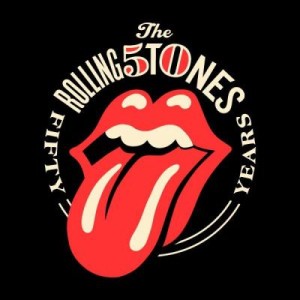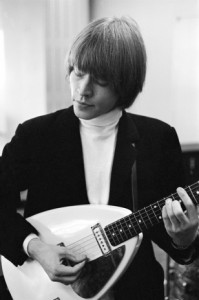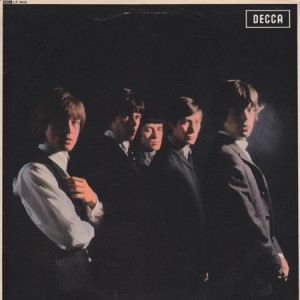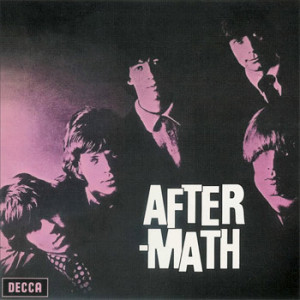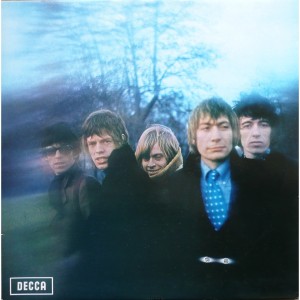Marking the 50th anniversary of the Rolling Stones inaugural concert at the Marquee Club on July 12th 1962, a series of celebratory events, books and a tour (put back to next year now) are all set to raise a glass to the groups half century milestone. Billed as The Rollin’ Stones – a title they’d taken from their revered idol Muddy Waters songbook – the hastily rehearsed and raw blues chancers stepped in at the last minute to replace Alexis Korner’s Blues Incorporated, who were booked to play a BBC session. Originally made-up of a ragtag bunch of London players, the line-up on that night included Mick Jagger on vocals, Keith Richards on guitars, Elmo Lewis (Brian Jones under his delta-blues inspired pseudonym) also on guitars, Dick Taylor (soon to be in The Pretty Things)on bass and Ian Stewart on piano. Confusion reigns on whether or not it was Mick Avory (future drummer of The Kinks) or Tony Chapman (later of The Preachers and The Herd) who actually sat-in on the drums with the band on this fateful night. Of course the Stones soon shed half of this mismatch of musicians, replacing Taylor and Chapman/Avory with Charlie Watts and Bill Wyman, and relegating Ian Stewart to a backstage role, though including him on most of their 60s recordings: the rest they say is history. To mark this seminal gig, the Stones were brought together (for the first time in four-years) to pose for the , ‘of-the-moment’, photographer Rankin outside a faux recreated facade of the original Marquee Club to shift copies of the officially sanctioned Rolling Stones 50 book (published by Thames & Hudson).
In honour of this historical rock’n’roll moment GIITTV celebrates with a potted history of the bands key moments. From those misdemeanour moments they’d rather forget, to the most essential singles and LP releases (and even haircuts), this meandering ramble through the Stones past is a leisurely tribute to one of the most important bands to ever grace our presence. Which isn’t to suggest they haven’t pushed our patience or shockingly indulged themselves in some painful moments of trite: for one thing, those musical highlights soon run-out when we get to the late 80s.
Follow me now readers, as we bring you the first instalment in this series of the 50 best, and not so glorious, moments of the Sones legacy.
1. Dartford Train Station: Richards and Jagger’s brief encounters.
Not the most auspicious or glamorous of starts, but the rather bleak modernist looking train station at Dartford played the most important part in the Rolling Stones eventual formation. Childhood friends until their families both moved away in the 50s, the future songwriting partnership met again whilst waiting for their connections on the dreary and mundane station platform. Jagger a student at the London School of Economics piqued the interest of Richards, an art student at Sidcup Art Collage, (a breeding ground for all manner of blues enthusiasts and players) with the Muddy Waters and Chuck Berry LPs he was waving under his arms. It would take another two-years before this brief encounter bore fruit, yet it’s perhaps one of the most important in musical folklore.
2. I Wanna Be Your Man.
I wanna be your lover Baby/ I wanna be your Man.
I wanna be your lover Baby/ I wanna be your Man.
Tell me that you love me Baby/ Tell me you Understand.
Tell me that you love me Baby/ Tell me you Understand.
I wanna be your Man
Simplicity is so often viewed as primitive, yet the Stones capture the surly teen’s sufferings for a bunk-up in 1-minute and 43-seconds of electrified rock and blue-eyed r’n’b by riffing on an uncomplicated infectious slide guitar hook and three lines of lyrics: helping to launch the American garage band explosion in the process.
Following on from their June 1963 debut single, the Chuck Berry cover Come On, the band chose to use the Beatles penned hit. Depending entirely on which version of the infamous anecdote you believe, either the Stones manager Andrew Loog Oldham, or the band themselves, bumped into the mop tops on the street and asked for help in penning a killer hook song. Songwriting duo of the moment, Lennon and McCartney soon rattled off a perfect ditty in minutes, handing it to an impressed onlooking Stones. Though subsequently dismissing it as a throwaway pastiche, the Beatles recorded it themselves, albeit as a Ringo vocal and album track; adding it to their upcoming 1963 album, With The Beatles. The Stones got there first though, releasing it three weeks earlier, and reaching no.12 in the hit parade.
3. Andrew Loog Oldham.
The young scruffy bunch of oiks needed a manager who could relate. Someone who was like them, a youngster. Step-on the burgeoning impresario and fixer, Andrew ‘Loog’ Oldham, who’d already worked with Joe Meek and helped publicise Dylan‘s first trip to England before catching the Stones in early 1963. Not even old enough to hold a mangers license, and at 19-years of age, younger than any of the Stones, Oldham was forced to sign a partnership deal with veteran booking agent, Eric Easton; the contract signed by Oldham’s mum. Ousting, quite ruthlessly, the bands former manager, Giorgio Gomelsky, Oldham set about roughing up the bands image and persuading them to write their own material in favour of handing over royalties to “middle-aged-blackman”. He also made Richards drop the s from his name to make it sound more pop, and removed the piano player extraordinaire , Ian Stewart from the line-up (apparently removed because his jaw was too square and he didn’t fit the leery sulk of the new ascetic) , making him the groups road manger – though he would also play on various Stone recordings and sessions still. He also rankled them a record contract with Decca, who bent-over backwards for their new signing after previously dismissing the Beatles.
Oldham was the key in the bands raise from blues orientated worship to moody teenage angst.
4. Brian Jones.
Nothing can be cooler than the image of a bowl-haired (which alone has garnered untold column inches and reverence) Jones sporting his famous tear-shaped guitar, or the image of Jones sporting a kaftan cross-legged and playing a sitar. His biggest contribution came via the assortment of exotic instruments he picked-up, from Morocco to the far east. It goes withouts saying that he was an accomplished guitarist, but Jones was also proficient on a number of other instruments: it’s just his songwriting abilities that sucked. A difficult character to say the least, who’s split personality could be vainly arrogant and confrontational one minute, shy and introverted the next. Originally the slide-guitar stalwart of Blues Incorporated, Jones was the integral mortar in the Rolling Stones; choosing gigs, material and the bands direction before the arrival of Andrew Loog Oldham. Sidelined by the Jagger/Richards pairing, Jones took a backseat, eventually consuming himself with an unhealthy drug dependancy, before alienating himself entirely from the group by the end of the 60s; replaced by Mick Taylor, and written-off. Not long after his sacking, Jones died in his own swimming pool under suspicious circumstances at the tender age of 27.
5. The Rolling Stones first LP.
Those moody, straight-faced punks stare out from their dark shadowed album with a look that means business. Made-up almost entirely of cover versions, grabbed from the patron black blues and r’n’b characters of Chicago, The Mississippi and Tennessee, the debut LP is almost an exalted tribute to their heroes. Rambunctious and loud, the pure rawness and bleed over of the instruments (something that no-one seemed concerned about in the studio at the time, and encouraged by Oldham) as they filled each others space, was a mixture of giddy adulation and blue-eyed indecorous rebellion. From the frayed, proto-punk amateurish sound of Route 66, to the gospel ye-ye of Can I Get A Witness, this album shambles along and offers up some convincing attempts to sound like Jimmy Reed, Willie Dixon and Slim Harpo. Of course they fail, but the results are actually better than the intention in many ways.
6. (I Can’t Get No) Satisfaction.
That three-chord riff, again so simple yet so impressive, is attributed to Keith Richards who swears he made it up, though its often been alluded that he heard it off Brian Jones who was picking it out one night in an adjoining hotel room when on tour: Richards hearing it through the wall, and quickly putting it on tape and consigning it to history. Add Jagger’s strutting and stammering pouting vocals and you have a hit and the anthem of a generation.
7. Aftermath.
On a roll, literally, the Stones fourth studio album, Aftermath was a major artistic breakthrough. Wholly consisting of original material, the 14-song suite convinced the world of the bands talent. What’s not to like?! Strutting punk number rock hits, Under My Thumb, sit side-by-side with the enchanting Elizabethan lamented, Lady Jane, whilst the epic rousing Out Of Time (covered brilliantly by Chris Farlowe) and ode to Nembutal-popping housewives, Mothers Little Helper ,are two of the best songs the Stones ever put on wax. This is the Stones really breaking the mould and upping the ante as they strive to compete with the Beatles.
8. Paint, It Black.
Left-off the UK version but both a single and the opening salvo on the US version of Aftermath, Paint It Black is a real galloping proto-psych number that dances in the flickering Gothic candle light: Jagger regaling the description of a funeral. Jones adds a stirring sitar to proceedings, as guesting session player and composer, Jack Nitzsche bawls away on the piano; the looming ominous mood a veritable feast of occult and eastern Baroque. Later on it would become one of the unofficial soundtracks for the Vietnam war, used on subsequent protests and films as the perfect atmospheric scene setter .
9. Between The Buttons.
As I said, they were on a roll. Following the acclaim of Aftermath, the Stones next album, Between The Buttons, was a more subdued but experimentally rich record. That R&B influence had all but evaporated, leaving the group to pursue a psychedelic agenda. To a point they were already preempting the American west coast scene and bands like Love, whilst featuring some of that honky tonk piano and suffused reverence they’d later pursue on Let It Bleed.
10. Ruby Tuesday.
Arguably one of their best and most accomplished (if not lush) B-sides, Ruby Tuesday is a balled for the free-spirited woman – Richards claims he wrote about his squeeze of the time, Linda Keith, who’d left him to shack-up with Jimi Hendrix (well if you’re going to lose her to someone). Various stories surround this song, claiming that it was either Richards or Jones who’d actually come up with it. Whatever the facts they both shaped it into the sweeping, ethereal lament we’ve come to hold dear.


